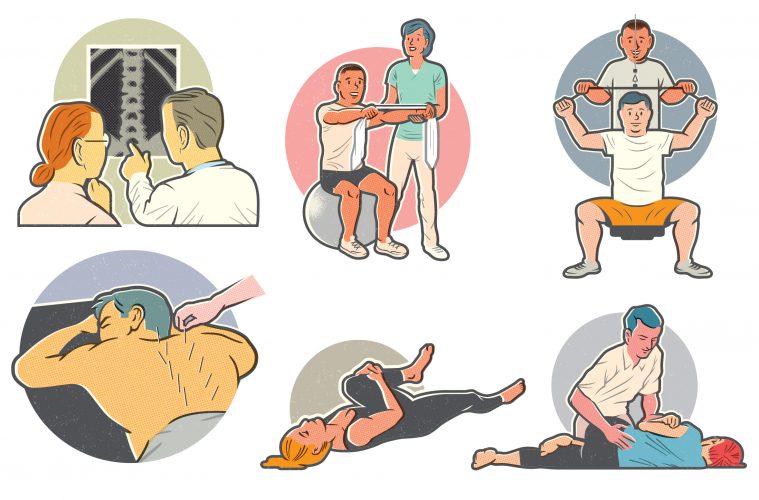Your back went out. Again. Maybe it was from lifting that last shovelful of heavy snow. Maybe you bent over to pick up a pen off the floor and didn’t get back up again for three days. Maybe you woke up sore for no good reason at all.
Wherever your back pain comes from, rest assured, you’re not alone. According to the National Institutes of Health, about 80 percent of Americans experience lower back pain at some point in their lives. In fact, it’s the most common cause of job-related disability and one of the top reasons people miss work and visit the doctor.
“Low back issues are very common,” says Jason Bessey, MD, an orthopedic spine surgeon at North Shore Medical Center and Massachusetts General Hospital. “Unfortunately, back pain isn’t something we’ve figured out an easy fix for.”
There may not be any easy fixes, but there is good news: Most cases of acute back pain resolve on their own within a few days or weeks. And for those cases that need some extra help, there are a wide range of professionals on the North Shore who can help speed recovery and prevent recurrences down the road, from medical doctors to acupuncturists to physical therapists and more.
Back Pain: The Basics
Back pain—especially lower back pain, which is among the most common back pain complaints—can feel incredibly debilitating. Plus, there are many factors that can contribute to back pain, from sustaining an injury to stress to weak core muscles, and even mental health issues. “There’s a clear link between symptoms of depression and anxiety and chronic pain in general,” says Bessey. “Everything shows that [with] most episodes of acute back pain…those people are generally going to get better on their own.”
In fact, physicians generally won’t even order imaging tests, such as an X-ray or MRI, until the pain has persisted for about six weeks. Most acute back pain is caused by inflammation of muscles or discs that compress the nerves and cause pain. That’s why physicians recommend medications—anti-inflammatories, like ibuprofen or naproxen sodium, or muscle relaxants, for instance—to help alleviate the discomfort. Physicians also often recommend physical therapy to help in those first few weeks of pain, as well as ice and heat. “In general, I tell people that right after the episode that caused the back pain, it’s a good idea to apply some ice,” says Zoher Ghogawala, MD, FACS, professor of neurosurgery at Tufts University School of Medicine and chairman of the department of neurosurgery at Lahey Hospital and Medical Center. “After a couple of days, warm, moist heat is probably the most effective because it helps relieve muscle spasms.”
Physicians also agree that the old recommendation of bed rest—which is associated with its own problems, like poor circulation and breathing issues—has fallen by the wayside. “It’s so important, I think, to try and do your regular activities of daily life,” Ghogawala says. “The concept of bed rest or not doing anything for a few days is probably not helpful, and doesn’t really help people get better faster.”
Instead, try to walk every day, but avoid running or lifting heavy weights. A physician can also help guide the use of other therapies, such as physical therapy to strengthen core muscles, acupuncture, Reiki, and massage. “They all have important roles to play in the first few weeks after someone’s back pain has begun,” Ghogawala says.
Of course, there are some cases where patients shouldn’t wait to see a doctor. For instance, pain that radiates down the leg or is accompanied by weakness or numbness should be addressed sooner rather than later. In addition, anyone having trouble with bowel or bladder function should go to an emergency department, Ghogawala says. Suffering a trauma, having a history of cancer, or having concerns about infection also warrants immediate attention, says Bessey.
When the pain doesn’t resolve on its own within six weeks, a physician will likely order an X-ray or MRI. Depending on the problem, additional treatments might include epidural steroid injection for nerve pain, other types of injections for chronic pain caused by arthritis in the joints, or radiofrequency ablation to destroy the nerves carrying pain signals to the brain.
However, both Ghogawala and Bessey say that a need for surgery for back pain is unlikely for most people. “The vast majority of problems with back pain do not need surgery,” Ghogawala says.
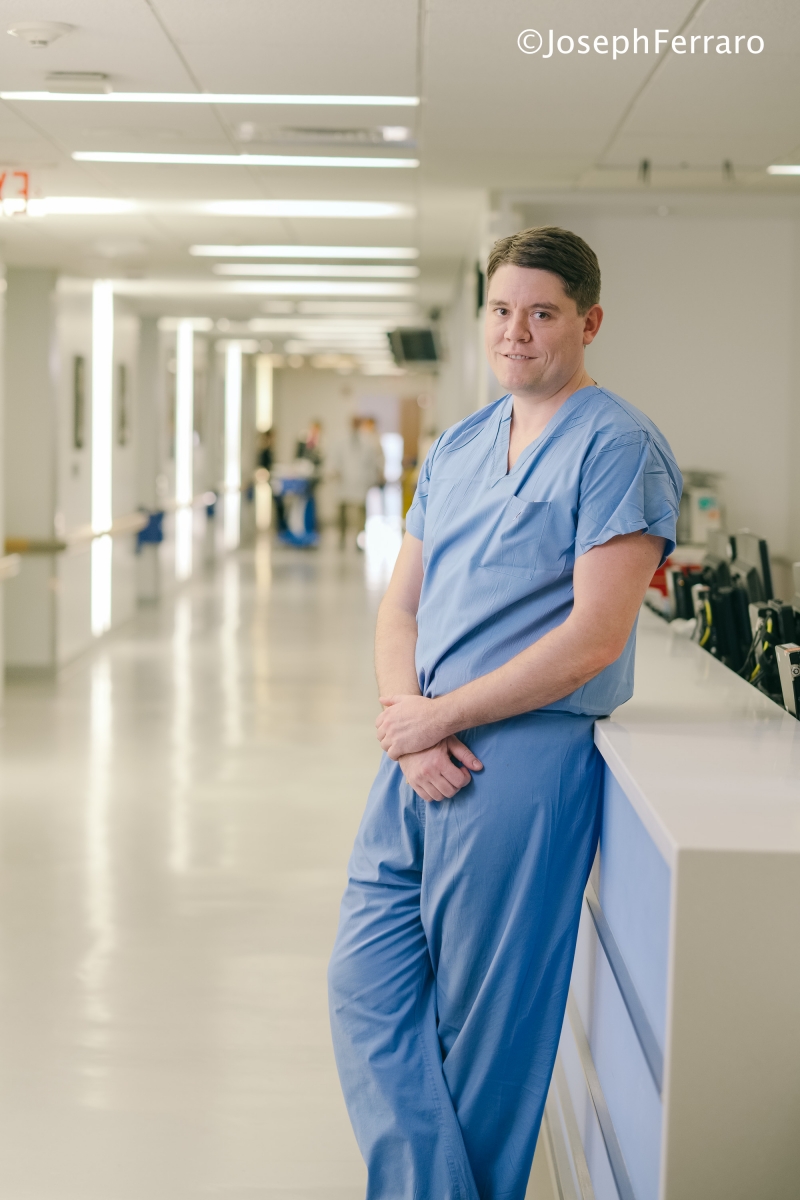
Orthopedic spine surgeon Dr. John Bessey
And while low back pain at some point is likely unavoidable for most of us, getting enough exercise, eating well, and caring for our physical and mental health can help reduce back problems down the road. Although those who suffer chronic back pain might never feel perfect all the time, treatment from physicians and other disciplines can help. “The goal of treatment is to give them many more good days than bad days, and most people are able to get there,” Bessey says.
Acupuncture
For many people suffering with back pain, acupuncture isn’t the treatment they first consider.
“The majority of people turn to acupuncture as a last resort, when they’re at their wits’ end with pain,” says Abigail Klerowski, MAc, LAc, a licensed acupuncturist and owner of North Shore Acupuncture & Wellness in Amesbury.
Yet acupuncture can provide relief for people suffering from back pain fairly quickly, and when it’s combined with other therapies, like chiropractic, physical therapy, and massage, it can work even better.
Acupuncture is an important component of traditional Chinese medicine that involves inserting thin needles into different acupressure points throughout the body, many of which can be instrumental in relieving back pain, including some at the ankles and hands. “There are 400 acupuncture points in the body, and there are lots of different combinations,” Klerowski says.
The sterile, single-use acupuncture needles are incredibly thin: About 20 acupuncture needles can fit into the head of a hypodermic needle. Klerowski says acupuncture isn’t painful, and many people even fall asleep during treatment.
Although some people are skeptical about the ideas behind acupuncture, Klerowski says the technique has “real mechanisms going on.”
“We’re really trying to chat with the nervous system, increase blood flow, and reduce muscle tension around the area,” she says.
When an acupuncture needle is inserted, “it creates a little microtrauma,” she says. The body then reacts to that foreign object, affecting the body’s nerve pathways and adjusting how the nervous system interprets pain, as well as kickstarting blood flow and an immune response.
Klerowski hopes that more people with back pain will give acupuncture a try. “People have got options,” she says.
Physical Therapy
Waiting out back pain isn’t easy, but physicians often recommend physical therapy in the early days and weeks after the pain starts. In fact, back pain is “the number one reason people seek physical therapy care,” says Andy McLlarky, physical therapist, clinic director, and co-owner at Soul Physical Therapy in Beverly. He adds that what many people don’t know is that people can see a physical therapist without getting a referral from a physician.
When assessing patients with back pain, physical therapists don’t address only the spot that hurts. Instead, physical therapists are “movement experts” who assess how you move globally—including your neck, mid-back, shoulders, hips, and other body parts—to piece together what’s going on. “Other things definitely impact how your low back is functioning,” McLlarky says.
After an assessment, a physical therapist will give patients exercises to do during sessions and at home. Some physical therapists will also do manual therapies like joint mobilization, dry needling, or massage.
McLlarky says that although people often avoid physical therapy because they’re afraid it will be too expensive or a long-term commitment, a typical course of physical therapy is only about six weeks long. In addition, there are exercises that people can do at home to help them build strength. “The goal for physical therapy is to show people that their body is resilient, and to show them how they can self-treat,” McLlarky says. “Getting them moving is really always the answer.”
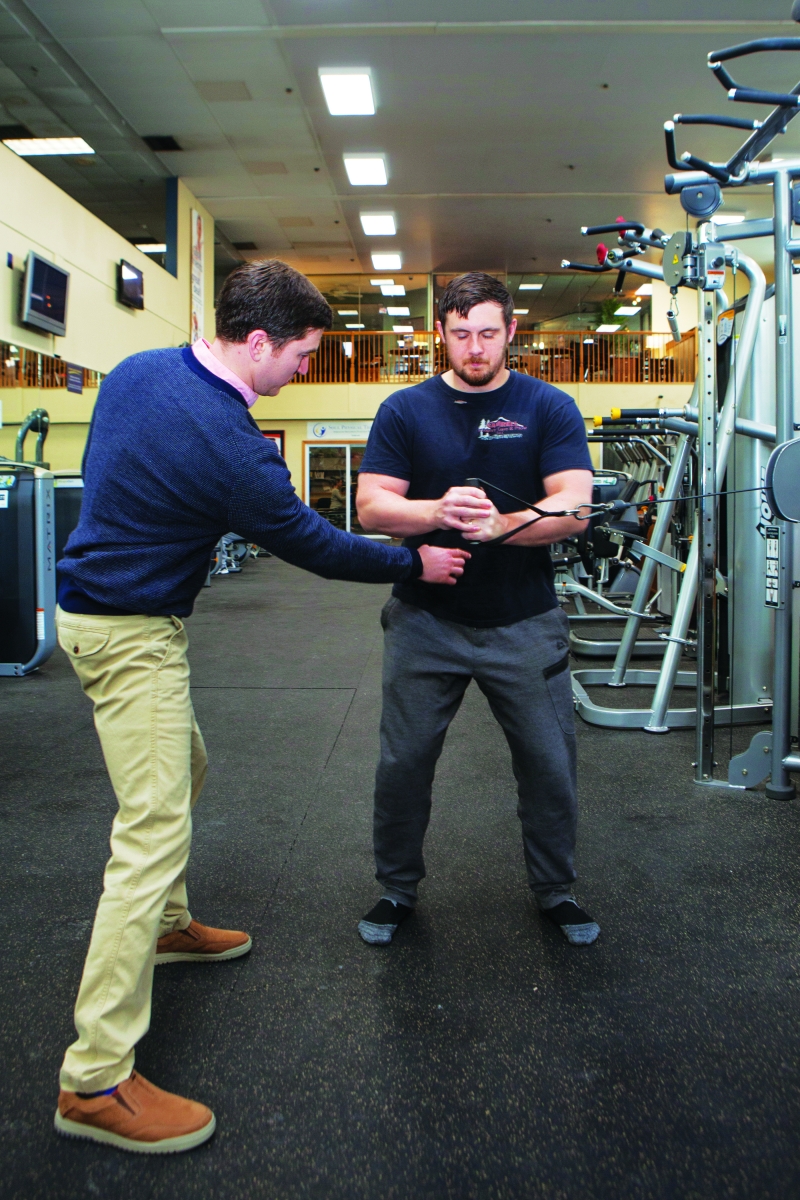
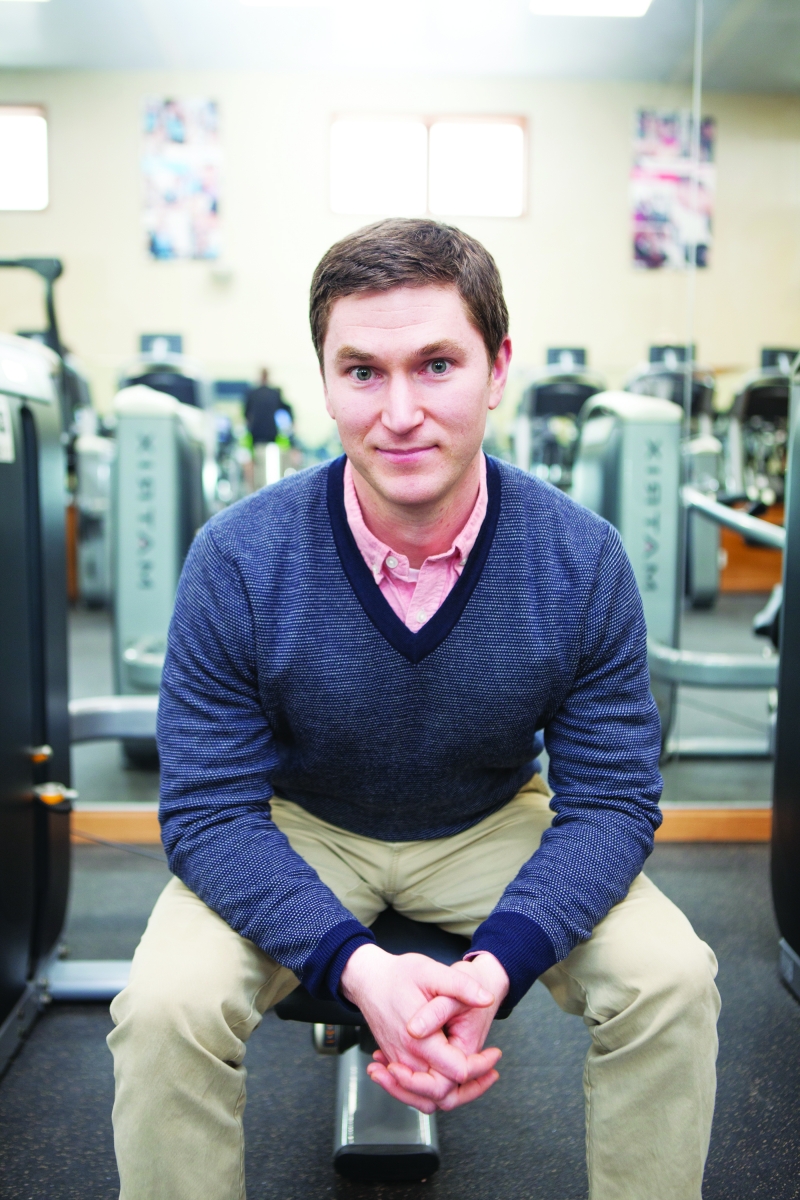
Physical therapist, clinic director, and co-owner at Soul Physical Therapy in Beverly, Andy McLarky helps a patient.
In addition, McLlarky recommends seeing a physical therapist soon after hurting your back, rather than waiting. “The quicker you go, the quicker you get better,” he says.
Stretching
Sitting constantly isn’t great for your back, but what if you’re stuck at a desk all day? Fear not. Chair stretches are some of the easiest things to do when at work, says Stefan Matté, chief product officer for the therapist-assisted stretching firm LYMBR.
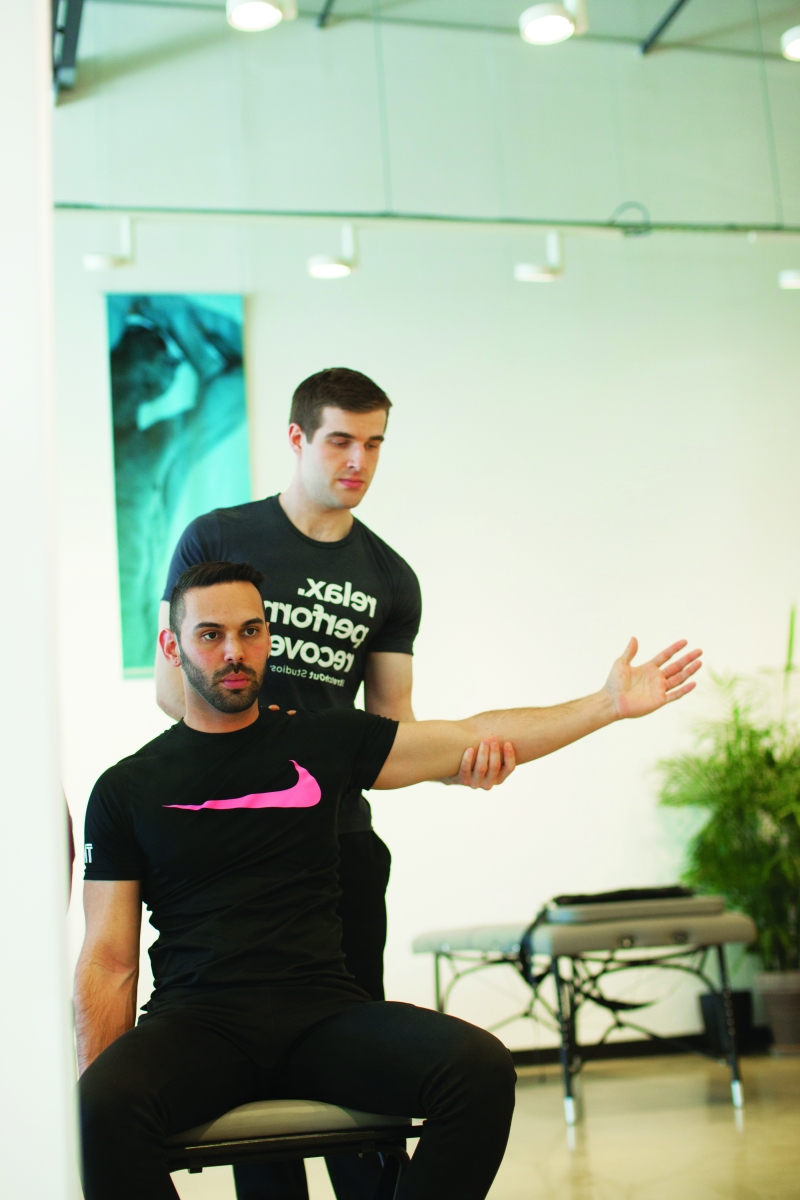
LYMBR, formally StretchOut Studios, specializes in stretching.
“The body is designed to move,” Matté says. “If it hurts to walk, move in your chair. Healing happens in motion—get moving!”
Here are three steps from Matté for doing just that:
• Before stretching, stand and notice how it feels to do so. Notice things like whether it feels easy, or if more weight is on one leg or the other.
• Sit toward the front of a chair. Turn your shoulders to one side three to five times. Repeat on the other side three to five times, or even eight times if it feels good.
• Start seated toward the front of the chair. Widen your feet and place one hand behind your head. Let your other hand hang by your side. Slowly bend toward the floor on the side where your arm is hanging, reaching your fingers toward the floor. Slowly lower and raise back up.
Personal Training
Being active and caring for your body are among the best ways to prevent back pain, but it’s not always clear which exercises will be the most beneficial to add to your regular routine. That’s where a personal trainer can really help.
Inflexibility, bad posture, desks and car seats that aren’t ergonomically ideal, and “too much sitting and not enough moving” are among the many culprits of back pain, says Amy Salant, a personal trainer and owner of Fitness Together in Andover. We asked her to share a few of her top tips for back pain sufferers.
• Stretch, then strengthen. “You have to get them moving before they can lift anything,” says Salant of clients. For instance, certain yoga poses, such as cat and cow and downward dog, are very helpful for back pain. Other stretches, such as hamstring stretches and hip openers, are helpful, too.
• Strengthen your core. Core-strengthening exercises involve more than just doing endless crunches. “It’s definitely not like that,” Salant says. “If you’re doing crunches, you’re really only activating your upper core.” Instead, she recommends planks, starting out with 10-second on and 10-second off intervals; pelvic tilts; and abdominal presses. Even squats, weight lifting, and other exercises should activate your core. A personal trainer can help you do them properly.
• Get up and move. Many people have a job where they’re sedentary, or sitting all day long. Salant recommends getting up and moving regularly. For instance, she told one client to get up once an hour and do 10 body weight squats right at her desk. “Everyone in the office used to laugh at her, but they all ended up joining in with her,” she says. In fact, any type of moving, whether it’s taking a walk during lunch or using the gym at work, is beneficial. “Even if it’s just 10 or 15 minutes, everything counts, everything adds up,” Salant says. “Just move more; that’s the key.”
• Stretch correctly. Salant says that it’s important to do different kinds of stretches, in the right order. She recommends starting with a five-minute warm-up, and then doing dynamic stretches while walking and moving; next, move on to the workout, with a static stretch at the end while the body is warm, both to get a better stretch and to reduce risk of injury.
Chiropractic
In a perfect world, our spines would stay perfectly aligned all the time. But it’s not a perfect world, and back pain is part of almost everyone’s life. That’s where chiropractors can come in.
“We have all these movable segments of the spine, and we want to make sure they’re all movable and in the right position. If anything is out of alignment in the spine, it’s going to impinge on nerves and cause pain,” says Joseph DeMarco, DC, owner and founder of DeMarco Chiropractic in Manchester-by-the-Sea. “Chiropractic is a natural approach to these different problems.”
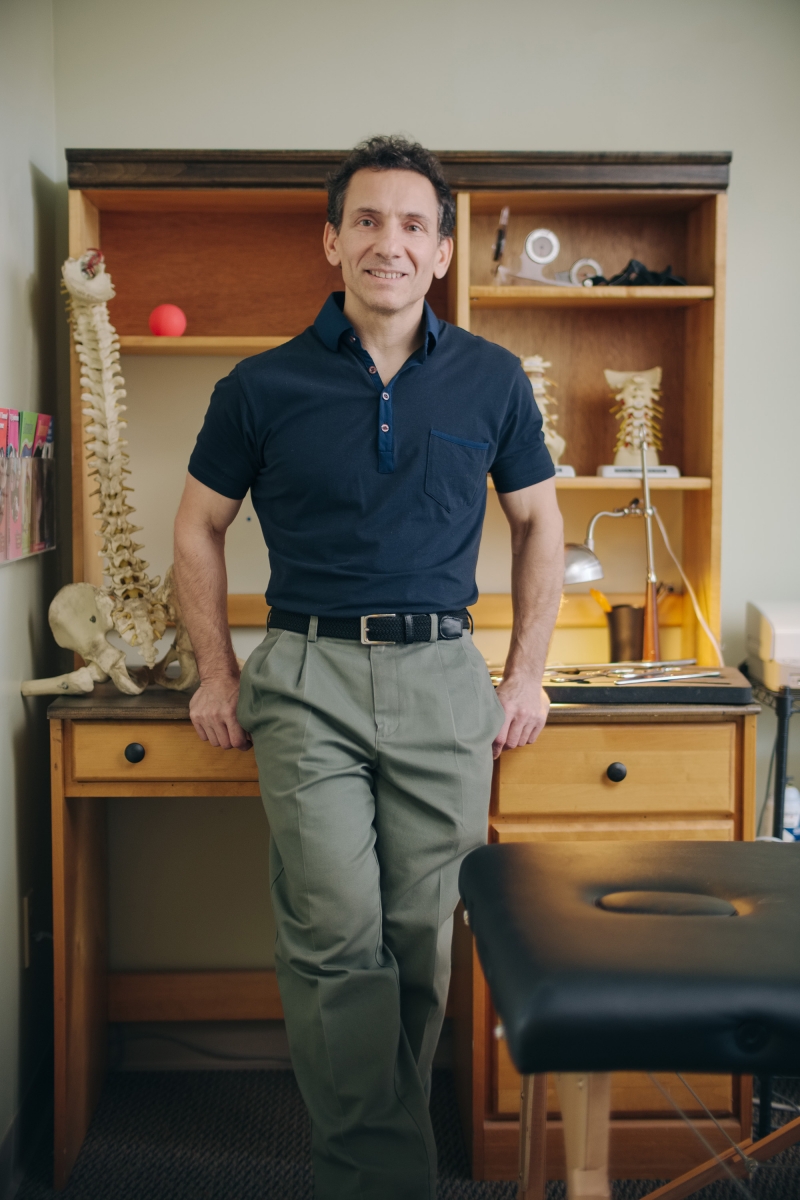
Joseph DeMarco, DC, is the owner and founder of DeMarco Chiropractic in Manchester.
DeMarco says one common cause of low back pain is dysfunction of the sacroiliac joint, which connects the sacrum with the pelvis. Often, people experiencing this have pain on one side of their lower back, which sometimes radiates into the buttocks. Unlike a traumatic injury, it’s slow in coming, and one final motion, such as bending over or sneezing, can throw it out.
“I find that besides the joint itself going out, there’s a lot of soft tissue adhesions,” DeMarco says. “People start losing elasticity…and things start tugging or pulling.”
Paul Fowler, DC, owner of Fowler Chiropractic office in Amesbury, says that often, patients in acute pain suffer for weeks, turning to chiropractic care for the first time when other remedies, like pain killers, heat, ice, and physical therapy, haven’t worked.
“What we’re treating underneath is pinched nerves,” Fowler says. “So many patients say they feel a tremendous amount of relief, even after the first visit.”
DeMarco uses a tool called an activator to put the joints back into alignment. Fowler uses a tool called an impact adjustor. But other chiropractors, like Jeffrey Kintish, DC, owner of Kintish Chiropractic Office Inc. in Beverly, use a manual approach to adjust people’s joints.
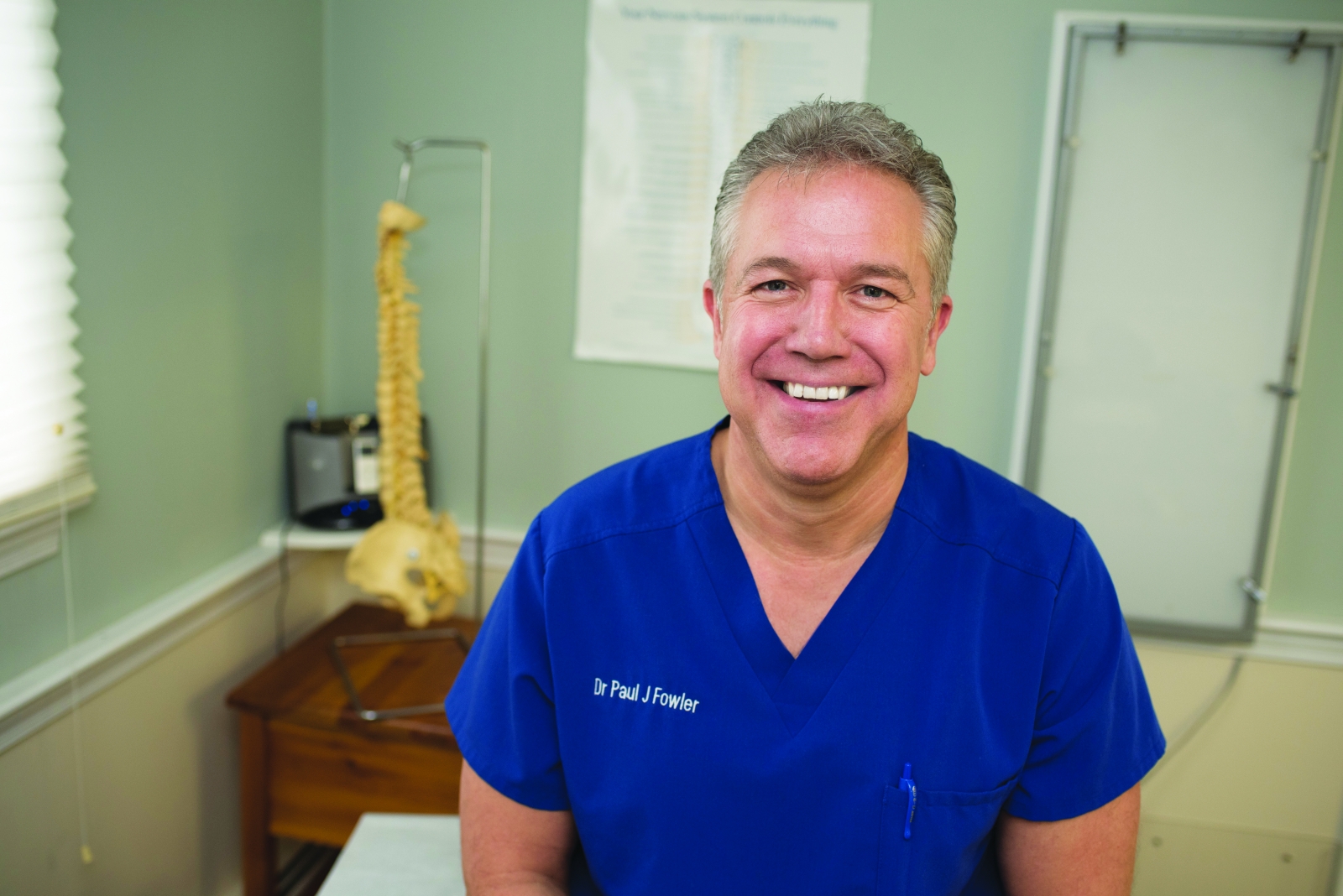
Paul J Fowler, DC, is the owner of Fowler Chiropractic Office in Amesbury.
He also uses other, passive modalities, such as electrostimulation and ultrasound, that can either increase or decrease circulation to the inflamed area, depending on the needed treatment.
Having a misaligned spine is part of life, and often it causes back pain. “Everyone’s going to go out of alignment. Wear and tear are just going to do it,” DeMarco says. “As humans, we’re bending, we’re twisting, we’re sitting.”
Fowler agrees, saying, “if you walk on two legs, 98 percent of you will have severe lower back pain at some point in your life.”
Although misalignment should be corrected periodically, there are things we can do to better hold our spines in alignment, such as strengthening core muscles, keeping body weight down, getting regular exercise, eating well, avoiding sitting for long periods of time, and improving posture. “It doesn’t take a long time,” Kintish says. “It’s just a matter of doing it.”
soulpt.com, northshoreacu.com, joedemarco.webs.com, northbostonchiropractic.com, fitnesstogether.com, belymbr.com, fowlerchiropractic.com

